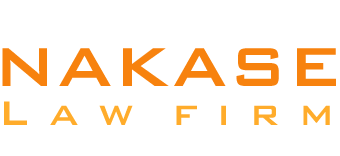Performance Management: What Is It?
Managers can monitor and assess workers’ work with the use of performance management tools. Encouraging people to operate to the maximum of their skills and in line with the organization’s overarching objectives is the aim of performance management. Both the public and private sectors make extensive use of performance management.
Key Learnings
- In line with the objectives of the company, performance management aims to support individuals in achieving their maximum potential.
- It encourages people to participate in goal-setting and sees them within the larger framework of the workplace.
- A clear knowledge of expectations is fostered by performance management, which places a strong emphasis on responsibility and openness.
- Performance management offers employees continuous feedback instead of merely yearly performance assessments.
The Mechanism of Performance Management
A structured program for performance management facilitates communication between managers and staff regarding goals, expectations, and career advancement, including how a worker’s efforts fit into the company’s overarching mission. It facilitates the allocation of the monies included in the performance plan of the business. Performance management, in general, sees workers in relation to the larger workplace structure. Although it is thought to be unachievable, in theory, businesses aim for the highest possible level.
Programs for performance management make use of conventional instruments like goal-setting and measurement, as well as milestone-setting. Additionally, they seek to provide criteria for defining and quantifying effective personal achievement. However, performance management considers every encounter with a worker as a chance to learn, as opposed to adhering to the antiquated model of annual evaluations.
Using performance management resources, managers can make judgments that will assist staff members meet their goals and modify workflow or suggest new actions. As a result, the business performs at its best and achieves its objectives. For instance, the supervisor of a sales team can assign goal revenue numbers to employees, with a deadline for meeting these numbers. In a system for performance management, the manager would provide direction based on performance metrics to support the salespeople in achieving their goals.
A focus on regular interactions can enhance overall communication, and continual responsibility fosters a better, more open work atmosphere. Everyone is more aware of what is expected of them since performance management sets clear guidelines. The job is less unpleasant when expectations are explicit. Workers are not attempting to win over a manager with a haphazard assignment, and managers are not concerned with knowing how to give feedback to workers who are not meeting expectations. They most likely already know if the whole thing is functioning.
According to a Gallup poll conducted in September 2022, 24% of employees were in agreement with the assertion: “My manager engages me in goal planning.”
Common Performance Management Procedure
While there are commercial performance-management applications available, most of the themes are tailored to meet the requirements of a particular company. Generally speaking, universal components of successful performance-management systems include things like:
- Matching the actions of employees to the objectives and mission of the business. It is important for every employee to know how their work fits into the larger objectives of the organization. The obligations of a job should be defined by both the individual and the manager.
- Establishing precise job performance goals. Employees can learn the following through management of performance: What services or products does my position produce? What processes does my work involve? What impact should my job have on the business? How should I communicate with coworkers, clients, and superiors?
- Setting performance-based, quantifiable goals. The chance to provide feedback on how success is determined should be granted to staff members. In addition to the services or products an employee creates, the expectations may also include activities an employee takes to complete a task or provide a service, behaviors an employee exhibits at work, and activities an employee employs when producing a product.
- Planning for the development of jobs. Workers ought to have a voice in the kinds of new skills they pick up and how they apply those skills to further the interests of the organization.
- Convening on a regular basis. Managers and staff should actively engage throughout the year to assess progress rather than wait for a yearly performance review.
Performance Management Advantages
Proponents of performance management argue that in addition to helping businesses achieve their objectives, it also improves employee satisfaction at work and has a positive impact on staff retention. Negative yearly performance assessments, for instance, can catch employees off guard. There should be fewer unexpected events as a result of managers’ continuous feedback throughout the year, even if management of performance may also include annual reviews.
For successful performance management, managers need to “think about their roles as mentors, not supervisors,” according to the surveying organization Gallup, which carries out global studies on workplace problems. Additionally, contacts between managers and employees are more motivating, interesting, and satisfying when managers conduct timely, performance-related talks that embody this idea than when yearly evaluations do not.”
According to studies, performance management frequently results in higher customer satisfaction, therefore the advantages can also be felt outside of the company.
How Does Performance Management Differ from Management by Objectives?
The MBO (management by objectives) corporate leadership paradigm is akin to performance management in that it aims to synchronize employees’ objectives with the organization’s. Determining goals, sharing those goals with staff, keeping track of progress, assessing performance, and recognizing accomplishments are the five main stages that are commonly included in it.
Similar to performance management, goal-setting involvement among employees is encouraged by MBO—at least in concept. Nonetheless, MBO is sometimes accused of being overly strict and goal-oriented, which drives managers and staff to fulfill objectives regardless of how they achieve them. MBO is “a method for performance assessment that’s been out of vogue for its main part,” as mentioned in a piece in the Harvard Business Review published in January 2003.
What Sets Performance Management & Performance Appraisal Apart?
Supervisors give workers continuous feedback as part of performance management. Performance reviews, on the other hand, usually offer an in-depth analysis covering a specific time frame, usually a year. A yearly performance review can be a part of a company’s performance management system, thus the two are not incompatible.
A SMART Goal: What Is It?
A lot of businesses, various organizations, and people employ SMART objectives as a component of a goal-setting framework and philosophy. It promotes establishing objectives that are specific, measurable, attainable (or achievable), relevant, and time-bound., according to the SMART acronym.
The Final Word
When implemented correctly, performance management may benefit both businesses and their workforce. The trick is regular, constructive feedback and staff involvement.































